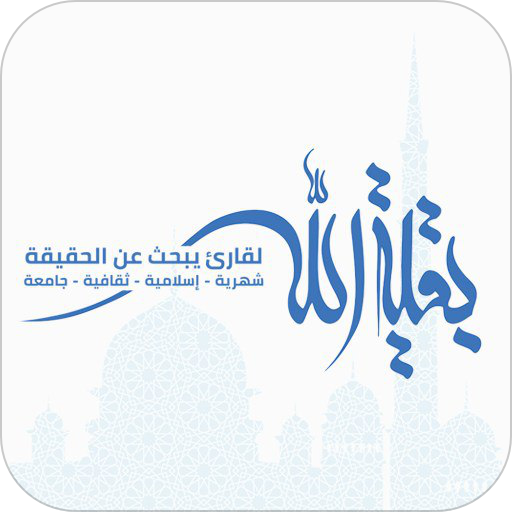The separation of Lady Fatima Masuma (A.S.) from Imam al-Rida (A.S.)
Although the separation from her father had been very difficult, Lady Fatima Masuma (A.S.) still had her brother to comfort her. However, in 200 A.H, Ma’mun (the 7th Abbasid Caliph), demanded Imam al-Rida’s (A.S.) presence in Khurasan. The departure of her brother further increased her sorrow. This separation lasted for only about one year, but sadly she passed away before they could be reunited.
When Amin (the 6th Abbasid Caliph) was killed by the soldiers of his brother Ma’mun, and Ma’mun became the Caliph, his rule was initially very unstable. The kingdom was divided and Ma’mun felt the need to gather support. So as to gain the support of the Shi`a, he insisted that Imam al-Rida (A.S.) come to Khurasan.
Here, he received the Imam (A.S.) with great honour, pretending to respect his position, and even claiming to be his follower. The true test of his sincerity would have been to abdicate in favour of the Imam (A.S.). Instead, he declared the Imam (A.S.) his successor, never intending that that day should come.
The Imam (A.S.) was forced to accept this invitation and he went to Khurasan, where his presence in the court of Ma’mun served the interests of the Shi`a and Islam. The Imam (A.S.) reached Khurasan in 200 A.H, and he was poisoned to death by Ma’mun in 203 A.H.
Ma’mun had prepared a document of the ‘wilayat’ (successorship) of Imam al-Rida (A.S.) in five copies. One of these copies was sent to Makka, one to Madina, one to Sham, one to Baghdad and one was kept in Khurasan.1
According to the orders of Ma’mun, the name of Imam al-Rida (A.S.) was mentioned in the khutbah (sermons) of the Friday prayers, in all the Islamic lands and coins with the name of the Imam (A.S.) were minted.
As a result of the intense desire of the Shi`a to be near the Imam, many of them decided to migrate to Khurasan. Some were also misled by the apparent respect being accorded to the Imam (A.S.) by Ma’mun, and were unaware of his deceit and political ploys.
The journey of Lady Fatima Masuma (A.S.) from Madina
After a difficult year of separation from her beloved brother, Lady Fatima Masuma (A.S.) decided to go to him. She began this journey from Madina to Khurasan, in the year 201 A.H, accompanied by a caravan made up of some members of her household and friends of the Imam (A.S.).
Some historians are of the opinion that Lady Fatima Masuma (A.S.) undertook this long and hazardous journey just to be close to her brother, but this is unlikely to be the only reason.
A more plausible reason for this journey is that she had a role to play at the side of the Imam (A.S.). Her immense learning and piety would help him in the propagation of Islam, especially amongst the ladies.
In this aspect her role would be similar to that of Lady Fatima Zahra (A.S.) at the side of the Prophet (peace be upon him and his household) or that of Lady Zaynab (A.S.) at the side of Imam Ali (A.S.), Imam Hasan (A.S.) and then at the side of Imam Husain (A.S.) in Karbala and in the aftermath of Karbala at the side of Imam Ali Zayn al-`Abidin (A.S.).
There are many different narrations of the events leading to this journey of the family of the Imam (A.S.) from Madina to Saweh and the events that unfolded during this journey.
According to one narration, the Imam (A.S.) wrote a letter to his sister, Lady Fatima Masuma (A.S.), which he sent to her with one of his servants, instructing him to hasten to Madina without stopping anywhere on the way.
After receiving the letter from her brother, Lady Fatima Masuma (A.S.), immediately prepared herself for the journey to Khurasan via Saweh.2
According to another tradition, the Imam (A.S.) wrote a letter to all his family members, inviting them to come to Khurasan.
It is narrated that after the arrival of this letter, a group consisting of the sons and other family member of the Imam (A.S.), and other Shi`a, numbering over 12000 people made their way to Khurasan.3
Another tradition says that when the letter of the Imam (A.S.) to his family members arrived, their sadness at their separation from the Imam (A.S.) made them decide to join him. A caravan was prepared, under the leadership of Ibrahim, son of Imam al-Kazim (A.S.), and they began their journey to Khurasan.4
It is narrated that two separate caravans headed towards Khurasan. One of these groups was the one that Lady Fatima Masuma (A.S.) was in. It was comprised of 23 people, under the leadership of Harun ibn Musa ibn Ja`far.5
The other group travelling to Khurasan consisted of about 12,000 people under the leadership of Ahmad ibn Musa al-Kadim.6
These caravans reached a town called Saweh on their way to Khurasan. Here they were attacked by enemies of the family of the Prophet (peace be upon them).
Many were martyred, including Harun, and many others were wounded or taken prisoner. A few managed to flee. A woman from the enemies put poison in the food of Lady Fatima Masuma (A.S.) and she became ill.
She then asked to be taken to Qum and her request was granted. After a few days stay in Qum, she died of her illness and was buried there.7
Another narration states that Harun and the other members of Lady Fatima Masuma’s (A.S.) family, totalling 23, were killed in an ambush by the people of the town of Saweh, who at that time had great enmity towards the family of the Prophet (peace be upon them). In the book Qiyam-e Sadat-e `Alawi, it is mentioned that the ambush was actually carried out by the soldiers of Ma’mun.
It is narrated that the soldiers insisted that the caravan progress no further. In the discussion that ensued, the soldiers falsely alleged, “Your Imam is dead.”
This lie caused consternation in the camp and some people decided to return to Madina, while others wanted to press on. This might account for the mistaken notion that Lady Fatima Masuma (A.S.) died as a result of being heartbroken at the news of the death of her beloved brother.
In any case, a confusion ensued and the soldiers took the opportunity to attack the camp. During the assault, Lady Fatima Masuma (A.S.) had to witness the brutal death of 23 close family members.
She is therefore sometimes compared to Lady Zaynab (A.S.), who also witnessed the slaughtering of her close family members. And due to this intensely sorrowful event, Lady Fatima Masuma (A.S.) became ill and was taken to Qum. And here after 16-17 days she passed away in Qum, and was buried there.8
It is also narrated that the second group consisting of about 12000 Shi`a were also attacked on the orders of Ma’mun, through the ruler of Fars, in a place called Shiraz. All the members of this group were either killed or ran away.9
The narrations above may explain why there are so many graves of the sons of the Imams (A.S.) and other family members found within Iran. For instance in Saweh itself, the graves of Sayyid Ishaq, Sayyid Abu Rida, Sayyid `Ali Asghar (all from the family of Imam (A.S.)) are popular sites for pilgrims, as are the graves in villages around Saweh, also attributed to children of the Imams (A.S.).10
Lady Fatima Masuma’s (A.S.) journey from Saweh to Qum
When Lady Fatima Masuma (A.S.) became ill at Saweh, she enquired from her companions, how far Qum was. She was told 10 farsakh (approx 60 km).11
She asked to be taken to Qum, which at the time was a centre of the Shi`a.12 Saweh, on the other hand, was hostile towards the family of the Prophet (peace be upon them).13
`Allamah Majlisi narrates:
“The more accurate narration is that, when it became known to the family of Sa`d Ash`ari, the leading Shi’a family in Qum at the time, that Lady Fatima Masuma (A.S.) was in Saweh and that she was ill, all of them went to Saweh to invite her to come to Qum.
Prominent amongst this family was Musa ibn Khazraj ibn Sa`d Ash`ari who was a companion of Imam al-Rida (A.S.). When he reached Lady Fatima Masuma (A.S.), he took the reins of her camel and brought her to Qum, to his own house. Here she spent the last few days (16 or 17 days) of her life.”14
It is believed that Lady Fatima Masuma (A.S.) died on the 10th or the 12th of Rabi` al-Thani and that she spent the last 16 or 17 days of her life in Qum, therefore we can estimate that she arrived in Qum around the 24th Rabi` al-Awwal, 201 A.H.
The house of Musa ibn Khazraj ibn Sa`d Ash`ari, where Lady Fatima Masuma (A.S.) lived for the few days that she was in Qum, has now become a school named “Madres-ye Sittiyeh”. [Sittiy means Lady – hence the name of the school is “School of the Lady”]. Till today, opposite the gates of this school and within its grounds, there remains the alter of worship (mihrab `ibadat) of this noble lady, where she spent hours of the last days of her life worshiping Allah. It has been named “Bayt al-Nur’ – “the House of Radiance”. The site is popular with pilgrims, who go there to pay their respects.
The events at the burial of Lady Fatima Masuma (A.S.)
The place where Lady Fatima Masuma (A.S.) is buried was known at the time of her burial as “Babelan”. It was a deserted area with no buildings. It belonged to Musa ibn Khazraj, who donated it for the purpose of the burial of this noble lady.
After the place of burial of Lady Fatima Masuma (A.S.) was selected, the family members of Sa`d prepared her final resting place by digging a crypt in which to place the holy body.
Once the Ritual Bath (ghusl) and the Shrouding (kafan) of the holy body had been completed, the family of Sa`d began discussing who would have the privilege of entering the crypt to lay the holy body into the ground.
After much discussion, they finally agreed on a man by the name of Qadir, who was a pious and God-fearing old man from the family of the Prophet (peace be upon them).
At that moment, they saw two masked riders appear, from the direction of the desert. These two masked riders approached swiftly and dismounted at the burial site. They came forward and recited the prayer for the dead (salat al-mayyit) for Lady Fatima Masuma (A.S.). Then, one of them entered the crypt while the other passed the holy body of Lady Fatima Masuma (A.S.) to him. In this way her burial took place.
After the ceremonies of burial were completed, these two masked riders, without uttering a word to anyone, mounted their horses and rode off into the distance.15
No one knows for certain who these masked men were, but those who were familiar with the character and behaviour of the Imams (A.S.), were in no doubt that these two personalities were Imam al-Rida (A.S.) and his son Imam al-Taqi (A.S.).
They had come from Khurasan and Madina respectively, by the miracle of being able to cross vast distances in an instant (tayy al-ard), to participate in the burial ceremonies of Lady Fatima Masuma (A.S.).
The presence of an Imam (A.S.) at the burial ceremony of a true Shi`a is not in itself unusual as there are many examples of this in history. In one instance, Imam al-Kadim (A.S.) came from Madina to Neyshabur to participate in the burial ceremonies of an old woman by the name of ‘Shatiteh’, who was a sincere and devout Shi`a. At that time, Imam (A.S.) said to Abu Ja`far Neyshaburi, who was present and wondered a t Imam’s (A.S.) presence so far from Madina:
“I, and whoever is the Imam of the Ahl al-Bayt after me in my place, has to be present in the escorting of your dead bodies, in which ever land you die in. So be God-fearing and pious and persist in doing good, so that we come and help free you from the fire of Hell.”16
From the tradition above, it would not be unjustified to assume that the two masked riders who appeared from nowhere, to take part in the burial ceremonies of Lady Fatima Masuma (A.S.) were, in fact, Imam al-Rida (A.S.) and Imam al-Taqi (A.S.).
The Tomb of Lady Fatima Masuma (A.S.)
Others who have been buried near Lady Fatima Masuma (A.S.)
Some years after the burial of Lady Fatima Masuma (A.S.), Umm Muhammad, daughter of Musa Mubarqa`, son of Imam al-Taqi (A.S.), was buried near her grave. Some time later, Maymunah, sister of Umm Muhammad died and was also buried near the grave of Lady Fatima Masuma (A.S.).
The dome on the graves of these two ladies was separate from that of Lady Fatima Masuma (A.S.). Then Burayhiyah, daughter of Musa, son of Imam al-Taqi (A.S.), was also buried in that place.17
The respected narrator, Shaykh `Abbas Qummi, has mentioned that several other ladies have also been buried in the same place, such as: Zaynab, daughter of Imam al-Taqi (A.S.); Umm Ishaq, slave of Muhammad ibn Musa Mubarqa` and Umm Habib, slave of Muhammad ibn Ahmad ibn Musa Mubarqa`.18
The fact that other noble ladies from the family of the Imams (A.S.) have also been buried near Lady Fatima Masuma (A.S.) explains why we find the following passage in Lady Fatima Masuma’s (A.S.) salutation (ziyarat), where we recite:
“Salutation on you, O daughters of the Prophet of Allah, Salutations and Mercy and the Blessings of Allah be on all of you.”
Another proof that others from the holy family are buried here is the incident narrated by the late Ayatollah Hajj Aqa Husain Mujtahid, who narrates:
“At the time of Nasir al-Din Shah (d.1313 A.H), when the floor of the shrine of Lady Fatima Masuma (A.S.) was being covered with marble, an opening was noticed in a part at the foot of the burial chamber (darih) of this noble lady.
It was decided that this opening would have to be repaired from within the crypt.
Two pious women were chosen to go into the crypt, to repair this opening. When they entered the crypt, they saw that the opening was not into the grave of Lady Fatima Masuma (A.S.) herself, but led to an adjoining crypt where the bodies of three ladies were buried. They reported that the bodies looked completely unmarked, as if they had been buried that very day.”
After investigation it was concluded that these bodies were of Maymunah, daughter of Musa Mubarqa`, son of Imam al-Taqi (A.S.) and her two slaves, Umm Ishaq and Umm Habib, who had been buried there eleven centuries ago!19
The above does not seem surprising if one looks at the tradition of Prophet Muhammad (peace be upon him and his household):
“Indeed Allah has made our flesh forbidden to the earth, and the ground never consumes from our bodies.”20
The Dome of the Shrine of Lady Fatima Masuma (A.S.)
1- Muhammad bin Hasan Amili, Tarikh-e Rawiyan, narrating from Nasi al-Din al-Tusi, p. 213.
2- Sayyid Dakhil bin Husain, Man La Yahduruh-u al-Khatib, vol. 4, p. 261.
3- Sayyid Muhammad `Ali Rawdati, Jam`i al-Ansab, p. 17.
4- Bihar al-Ansab, pp. 91 - 94.
5- `Ali Akbar Tashayyad, Qiyam-e Sadat-e `Alawi, p. 160.
6- Ibid., p. 169.
7- Ibid., pp. 160 & 168; Ja`far Murtada `Amili, Al-Hayat al-Siyasiyah Li al-Imam al-Rida, p. 428.
8- Shaykh Mahdi Mansuri, Hayat al-Sitt, p. 160.
9- Qiyam-e Sadat-e `Alawi, p. 169.
10- Qiyam-e Sadat-e `Alawi, p. 166.
11- Bihar al-Anwar, vol. 60, p. 219.
12- Zindegi-ye Hadrat-e Musa ibn Ja`far, vol. 2, p. 384.
13- Ghanjineh-ye Athar-e Qum, vol. 1, p. 382.
14- Bihar al-Anwar, vol. 60, p. 219.
15- Bihar al-Anwar, vol. 48, p. 290 and Tarikh-e Qadim-e Qum, p. 213.
16- Ibn Hamza , Al-Thaqib fi al-Manaqib, p. 445.
17- Bihar al-Anwar, vol. 60, pp. 220 & 229.
18- Muntaha al-Amal, vol. 2, p. 162.
19- Mirza Musa Farahani, Iqamat al-Burhan dar Usul-e Din, p. 479.
20- Bihar al-Anwar, vol. 22, p. 550; Man La Yahduruh-u al-Faqih, vol. 1, p. 121.
















